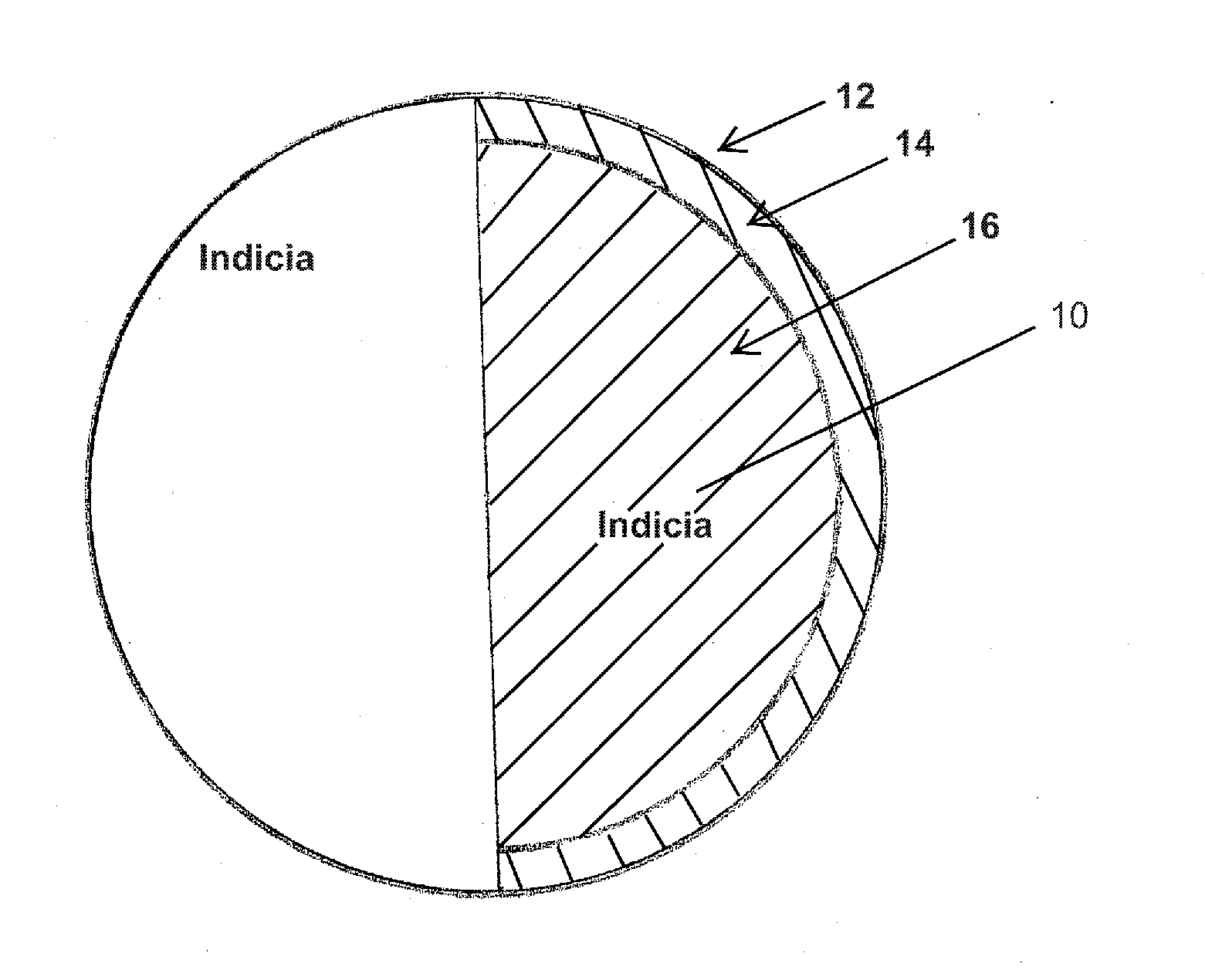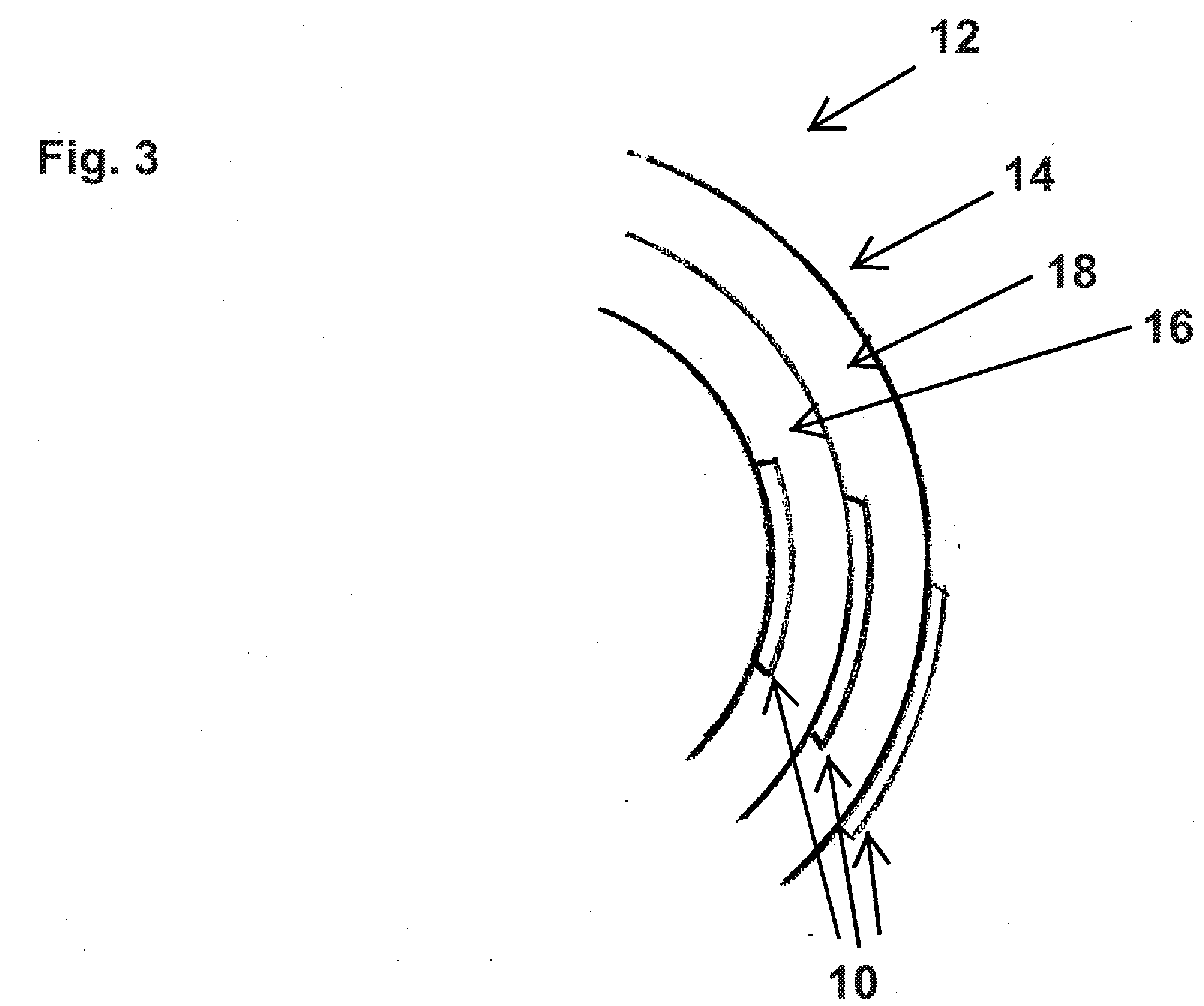Noncontact printing on subsurface layers of translucent cover golf balls
a golf ball and translucent cover technology, applied in the field of golf ball indicia formation, can solve the problems of insufficient impact resistance, insufficient durability of inks employed in pad printing, and many problems with ink transfer
- Summary
- Abstract
- Description
- Claims
- Application Information
AI Technical Summary
Problems solved by technology
Method used
Image
Examples
Embodiment Construction
[0022]This invention relates to a noncontact printing method for applying indicia, such as insignia, stripes, or other markings, on at least one subsurface layer of a substantially transparent or translucent cover golf ball, e.g. the core, or one or more intermediate layers. The indicia may be visible in ambient light or are only visible when exposed to specific non-ambient light wavelengths, e.g. ultraviolet wavelengths. Advantageously, this method of noncontact printing on subsurface golf ball layers substantially improves the durability of indicia because such indicia are protected from direct abrasion and club impacts by the cover. Moreover, unlike pad printing, noncontact printing forms indicia that are not susceptible to ink degradation because the indicia are solid markings created by very small discrete dots. In alternative embodiments, when a golf ball comprises three or more parts (e.g., a core, intermediate layer(s), and cover), both the cover and the intermediate layer(s...
PUM
 Login to View More
Login to View More Abstract
Description
Claims
Application Information
 Login to View More
Login to View More - R&D
- Intellectual Property
- Life Sciences
- Materials
- Tech Scout
- Unparalleled Data Quality
- Higher Quality Content
- 60% Fewer Hallucinations
Browse by: Latest US Patents, China's latest patents, Technical Efficacy Thesaurus, Application Domain, Technology Topic, Popular Technical Reports.
© 2025 PatSnap. All rights reserved.Legal|Privacy policy|Modern Slavery Act Transparency Statement|Sitemap|About US| Contact US: help@patsnap.com



